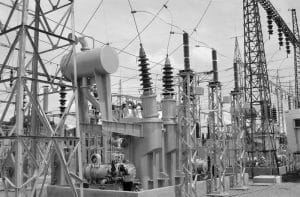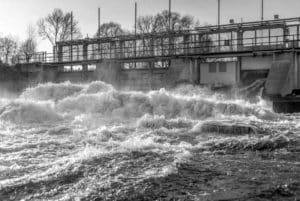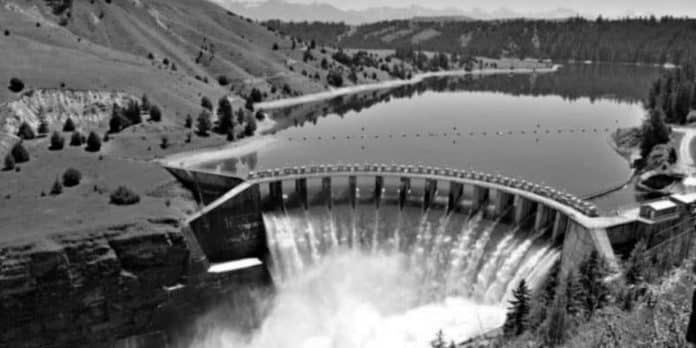Introduction to Kakono Hydroelectric Power Station
Tanzania is making significant strides in its quest to harness renewable energy sources to power its growing economy. One such initiative is the Kakono Hydroelectric Power Station, a state-of-the-art facility located in the Kagera region of northwestern Tanzania. This hydroelectric power station is poised to play a pivotal role in Tanzania’s renewable energy landscape, driving sustainable development and economic growth across the country.
The Kakono Hydroelectric Power Station is a testament to Tanzania’s commitment to reducing its carbon footprint and transitioning towards a more environmentally-friendly energy mix. As you delve into the details of this remarkable project, you’ll discover how it is transforming the nation’s energy landscape and paving the way for a brighter, more sustainable future.
Importance of Renewable Energy in Tanzania
Tanzania, like many developing nations, faces the challenge of meeting the ever-increasing demand for electricity while simultaneously reducing its reliance on fossil fuels. The country’s abundant natural resources, including water, wind, and solar, provide a unique opportunity to harness renewable energy sources and drive sustainable development.
Renewable energy not only helps Tanzania reduce its carbon emissions but also enhances energy security, diversifies the energy mix, and creates new economic opportunities for its citizens. By investing in projects like the Kakono Hydroelectric Power Station, Tanzania is positioning itself as a regional leader in the renewable energy sector, setting an example for other African nations to follow.
Overview of Hydroelectric Power and its Benefits

Hydroelectric power is a clean, renewable, and efficient source of energy that has been widely adopted worldwide. This technology taps into the kinetic energy of flowing water to generate electricity, making it a sustainable and environmentally-friendly alternative to fossil fuels.
The benefits of hydroelectric power are numerous:
- Renewable and Sustainable: Hydroelectric power is a renewable resource, as it relies on the continuous flow of water, which is replenished by the water cycle.
- Low Emissions: Hydroelectric power generation produces minimal greenhouse gas emissions, making it a clean and environmentally-friendly energy source.
- Reliability and Flexibility: Hydroelectric power plants can be quickly ramped up or down to meet fluctuating energy demands, providing a reliable and flexible source of electricity.
- Long-term Cost Savings: Once the initial investment in the hydroelectric infrastructure is made, the operating costs are relatively low, leading to long-term cost savings for consumers.
- Economic Development: Hydroelectric power projects can stimulate economic growth by creating jobs, supporting local industries, and attracting investments.
By harnessing the power of water, the Kakono Hydroelectric Power Station is poised to deliver these benefits to the people of Tanzania, driving sustainable development and economic prosperity.
The Development and Construction of Kakono Hydroelectric Power Station
The Kakono Hydroelectric Power Station is the result of a collaborative effort between the Tanzanian government, international development partners, and private sector stakeholders. The project was conceived as part of Tanzania’s broader strategy to diversify its energy mix and increase the country’s overall electricity generation capacity.
The development and construction of the Kakono Hydroelectric Power Station involved several key stages:
- Site Selection and Feasibility Studies: The Tanzanian government, in partnership with technical experts, conducted comprehensive feasibility studies to identify the most suitable location for the hydroelectric power station. The Kakono site was selected due to its favorable hydrological conditions and proximity to existing infrastructure.
- Environmental and Social Impact Assessments: Before the construction phase, rigorous environmental and social impact assessments were carried out to ensure the project’s sustainability and mitigate any potential negative effects on the local community and ecosystem.
- Financing and Partnerships: The Kakono Hydroelectric Power Station project was financed through a combination of government funding, international development assistance, and private sector investments. This collaborative approach helped to mobilize the necessary resources and expertise to bring the project to fruition.
- Construction and Commissioning: The construction of the Kakono Hydroelectric Power Station was a complex and multi-year endeavor, involving the development of dams, turbines, and transmission infrastructure. The project was completed on schedule and within budget, with the power station being officially commissioned in 2021.
The successful development and construction of the Kakono Hydroelectric Power Station demonstrate Tanzania’s commitment to renewable energy and its ability to execute large-scale infrastructure projects that drive sustainable growth.
Technical Specifications and Capacity of the Power Station
The Kakono Hydroelectric Power Station is a state-of-the-art facility that boasts impressive technical specifications and a significant generation capacity. Some key details about the power station include:
- Installed Capacity: The Kakono Hydroelectric Power Station has an installed capacity of 222 megawatts (MW), making it one of the largest hydroelectric power plants in Tanzania.
- Turbines and Generators: The power station is equipped with four Francis-type turbines, each capable of generating up to 55.5 MW of electricity. These turbines are coupled with high-efficiency generators to maximize power output.
- Dam and Reservoir: The power station is built around a concrete gravity dam that stands 63 meters tall and 385 meters long. The associated reservoir has a storage capacity of 1.3 billion cubic meters, ensuring a reliable water supply for electricity generation.
- Transmission Infrastructure: The Kakono Hydroelectric Power Station is connected to the national grid through a 220-kilovolt (kV) transmission line, allowing the generated electricity to be distributed across Tanzania.
- Annual Energy Generation: The power station is expected to generate approximately 1,000 gigawatt-hours (GWh) of electricity per year, significantly contributing to Tanzania’s overall energy production.
These technical specifications and the power station’s impressive generation capacity demonstrate the scale and sophistication of the Kakono Hydroelectric Power Station project, positioning it as a key driver of renewable energy growth in Tanzania.
Environmental Impact and Sustainability Measures

The Kakono Hydroelectric Power Station was designed and constructed with a strong focus on environmental sustainability and the preservation of the local ecosystem. The project’s development team worked closely with environmental experts and the local community to implement a comprehensive set of measures to mitigate any potential negative impacts.
Some of the key environmental and sustainability initiatives undertaken for the Kakono Hydroelectric Power Station include:
- Environmental Impact Assessment: A thorough environmental impact assessment was conducted during the planning stages to identify and address potential environmental risks, including impacts on wildlife, water resources, and land use.
- Biodiversity Conservation: The project incorporated measures to protect the local biodiversity, such as the establishment of wildlife corridors, habitat restoration, and the relocation of endangered species.
- Water Management: The power station’s design includes advanced water management systems to ensure the sustainable use of water resources, including measures to maintain downstream water flows and water quality.
- Renewable Energy Integration: The Kakono Hydroelectric Power Station is designed to seamlessly integrate with Tanzania’s growing renewable energy portfolio, further reducing the country’s overall carbon footprint.
- Community Engagement: The project team actively engaged with local communities throughout the development and construction phases, addressing their concerns and incorporating their feedback to ensure the project’s long-term sustainability.
By prioritizing environmental sustainability and community engagement, the Kakono Hydroelectric Power Station sets a high standard for renewable energy projects in Tanzania, demonstrating the country’s commitment to sustainable development.
Socio-Economic Benefits and Job Creation
The Kakono Hydroelectric Power Station project has not only transformed Tanzania’s energy landscape but has also delivered significant socio-economic benefits to the local and national communities. The project has been a catalyst for job creation, skills development, and economic growth, contributing to the overall well-being of the Tanzanian people.
Some of the key socio-economic benefits of the Kakono Hydroelectric Power Station include:
- Job Creation: The construction and operation of the power station have generated thousands of direct and indirect jobs, providing employment opportunities for skilled and unskilled workers in the region.
- Skills Development: The project has facilitated the training and upskilling of local workers, equipping them with the necessary technical and managerial skills to contribute to the power station’s operations and maintenance.
- Local Business Opportunities: The influx of workers and the increased economic activity in the region have created new business opportunities for local entrepreneurs, ranging from hospitality services to supply chain logistics.
- Improved Access to Electricity: The Kakono Hydroelectric Power Station has significantly increased the availability and reliability of electricity in the Kagera region, supporting the growth of local industries and improving the quality of life for residents.
- Community Development: The project has invested in various community development initiatives, such as the construction of schools, healthcare facilities, and infrastructure improvements, to uplift the local communities and ensure the equitable distribution of the project’s benefits.
By leveraging the Kakono Hydroelectric Power Station’s socio-economic impact, Tanzania is not only driving renewable energy growth but also fostering inclusive and sustainable development across the country.
Integration of Kakono Hydroelectric Power Station into the National Grid
The Kakono Hydroelectric Power Station has been seamlessly integrated into Tanzania’s national electricity grid, ensuring the efficient distribution and utilization of the generated power. This integration has been a crucial step in maximizing the power station’s impact and contributing to the country’s overall energy security.
The key aspects of the Kakono Hydroelectric Power Station’s integration into the national grid include:
- Transmission Infrastructure: The power station is connected to the national grid through a 220-kV transmission line, which ensures the reliable and efficient transportation of electricity to various parts of the country.
- Grid Synchronization: The power station’s generators and control systems have been meticulously designed to synchronize with the national grid, maintaining the stability and quality of the electricity supply.
- Load Balancing: The Kakono Hydroelectric Power Station’s flexible generation capabilities allow it to be easily integrated into the national grid, helping to balance the fluctuating electricity demand across Tanzania.
- Energy Dispatch and Optimization: The power station’s operations are closely coordinated with the national grid operator, ensuring the optimal dispatch of electricity based on demand and grid requirements.
- Future Grid Expansion: The Kakono Hydroelectric Power Station’s strategic location and robust infrastructure have positioned it as a key component in Tanzania’s plans to expand and strengthen its national electricity grid, supporting the country’s long-term energy goals.
By seamlessly integrating the Kakono Hydroelectric Power Station into the national grid, Tanzania is leveraging the power station’s full potential to drive sustainable energy growth and secure a reliable electricity supply for its citizens and industries.
Challenges and Future Prospects of the Power Station
While the Kakono Hydroelectric Power Station has been a remarkable success story in Tanzania’s renewable energy journey, the project has also faced some challenges that must be addressed to ensure its long-term sustainability and continued growth.
Some of the key challenges and future prospects of the Kakono Hydroelectric Power Station include:
- Climate Change Resilience: As a hydroelectric power station, the Kakono facility is vulnerable to the potential impacts of climate change, such as changes in precipitation patterns and water availability. Developing strategies to enhance the power station’s climate resilience will be crucial for its long-term viability.
- Grid Modernization: To fully leverage the Kakono Hydroelectric Power Station’s generation capacity, Tanzania must continue to invest in the modernization and expansion of its national electricity grid, ensuring the grid’s ability to efficiently distribute and manage the increasing supply of renewable energy.
- Capacity Expansion: Given the growing energy demands in Tanzania, there may be opportunities to expand the Kakono Hydroelectric Power Station’s generation capacity in the future, further strengthening the country’s renewable energy portfolio.
- Technological Advancements: As renewable energy technologies continue to evolve, the Kakono Hydroelectric Power Station may benefit from the integration of new, more efficient turbines, generators, and control systems, improving its overall performance and sustainability.
- Community Engagement and Benefit-Sharing: Maintaining strong community engagement and ensuring the equitable distribution of the power station’s benefits will be crucial for sustaining the project’s social and environmental impact over the long term.
By addressing these challenges and capitalizing on the future prospects of the Kakono Hydroelectric Power Station, Tanzania can solidify its position as a regional leader in renewable energy and continue to drive sustainable development across the country.
Conclusion: The Role of Kakono Hydroelectric Power Station in Driving Renewable Energy Growth in Tanzania
The Kakono Hydroelectric Power Station stands as a shining example of Tanzania’s commitment to harnessing renewable energy sources to power its economic growth and development. This state-of-the-art facility has not only increased the country’s electricity generation capacity but has also set a new standard for sustainable energy projects in the region.
Through the Kakono Hydroelectric Power Station, Tanzania has demonstrated its ability to successfully execute large-scale infrastructure projects, mobilize diverse stakeholders, and deliver tangible socio-economic benefits to local communities. By seamlessly integrating the power station into the national grid, Tanzania has ensured the efficient distribution and utilization of the generated electricity, contributing to the country’s overall energy security and reliability.
As Tanzania continues to prioritize renewable energy development, the Kakono Hydroelectric Power Station will undoubtedly play a pivotal role in driving the country’s sustainable energy transition. By building on the success of this project and addressing the challenges that lie ahead, Tanzania can further solidify its position as a regional leader in renewable energy and set an example for other African nations to follow.
For more articles related to Energy in Tanzania click here!
































